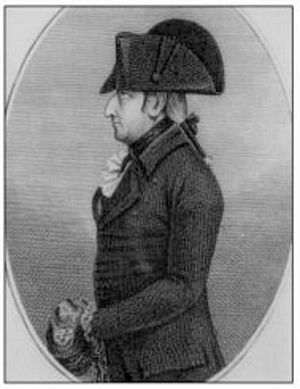Arthur Moore (Tralee MP) facts for kids
Arthur Moore (born 1765, died 1846) was an important Irish lawyer, judge, and politician. He was known for his work in the legal system and for being a member of Parliament.
Arthur Moore was born in Durrow, County Laois, Ireland. He was the second son of Lewis Moore II and Margaret Moore. Arthur went to school at the Royal School in Armagh. He then studied at Trinity College, Dublin, and the Middle Temple. In 1788, he became a lawyer in Ireland. He was made a King's Counsel in 1798.
Contents
Arthur Moore's Public Life
A Politician in Parliament
In 1798, Arthur Moore was chosen to be a Member of Parliament for Tralee. He was against the Acts of Union, which joined Ireland and Great Britain. Even so, he became a member of the first Parliament of the United Kingdom. He represented Tralee there. He joined the Parliament in London by June 1801. He often spoke in debates during that time. He did not try to be re-elected in 1802.
Working as a Legal Officer
In 1801, Arthur Moore was made the Third Serjeant-at-law in Ireland. This was a government job for a senior lawyer. People thought he was a very good lawyer and Member of Parliament. Even though he was against the Union, he usually supported the government. For example, in 1811, he defended the government's actions. They had stopped some Catholic political meetings in Dublin.
In 1805, he was promoted to First Serjeant. This was a more important role. The First Serjeant was higher than other Serjeants and lawyers.
A Judge in Ireland
From 1814 to 1815, as First Serjeant, he worked to stop farming troubles in the South of Ireland. In July 1816, he became a Justice of the Court of Common Pleas in Ireland. This was a well-liked choice. He was a good lawyer and very popular. He served as a judge until February 1839.
In 1839, after he retired, he spoke to a special committee. This committee was from the House of Lords in the United Kingdom. He was asked about crime in Ireland. He said there was a lot of crime. But he also believed things had gotten better recently.
Arthur Moore died in 1846 at his home, Lamberton Park. This home was in Maryborough, County Laois. He had inherited Lamberton in 1803 from his cousin. The famous writer Sir Walter Scott visited Lamberton in 1825. He was very impressed by Moore's kindness. Today, only part of the gate remains of the house.
Arthur Moore's Family
Arthur Moore married Frances Stoney. She was the daughter of George Stoney. Frances had a younger brother named Andrew Robinson Stoney. Andrew was known for his difficult behavior. He died in a prison for people who owed money in 1810.
Arthur and Frances had at least four children. Their children included:
- John Tydd Moore, who became a Vicar in County Kilkenny.
- Frances Margaretta, who married John Balfour Magenis.
- Elizabeth, who married William Persse. William was a cousin of the famous writer Lady Gregory.
Arthur Moore's son, also named Arthur, became a Dean in the Church of Ireland. The younger Arthur died in 1882.



